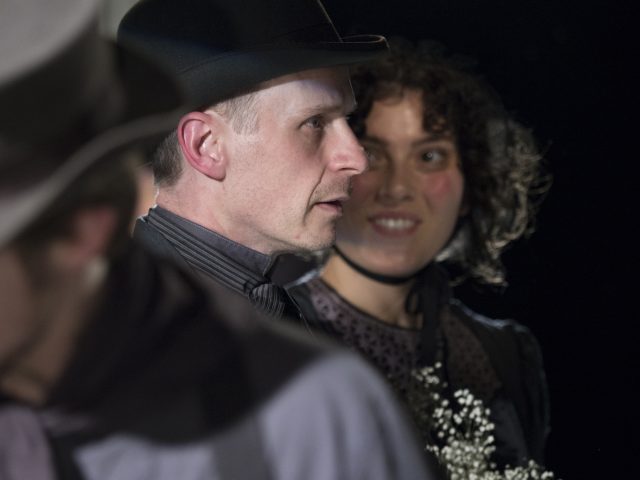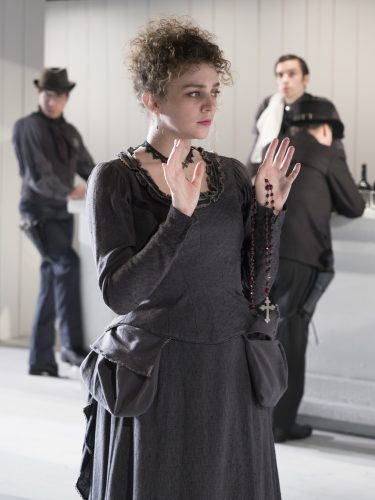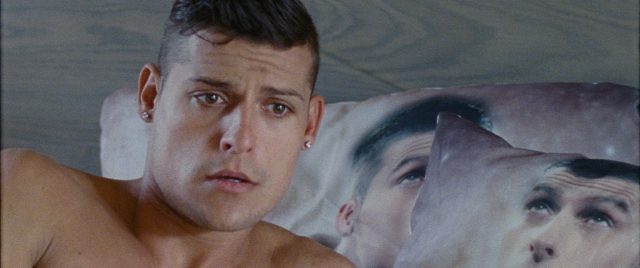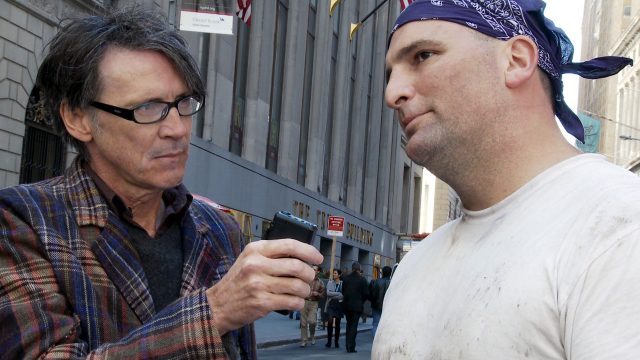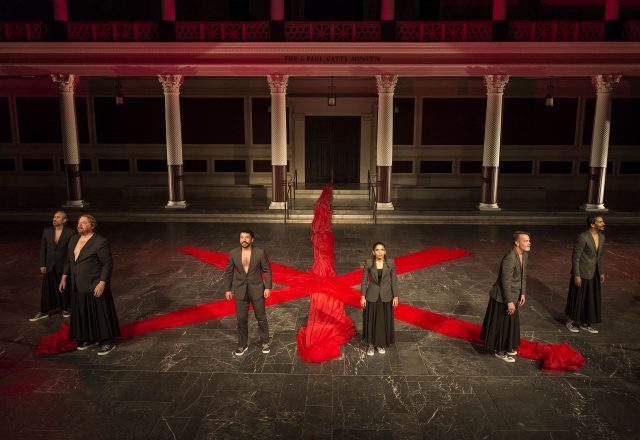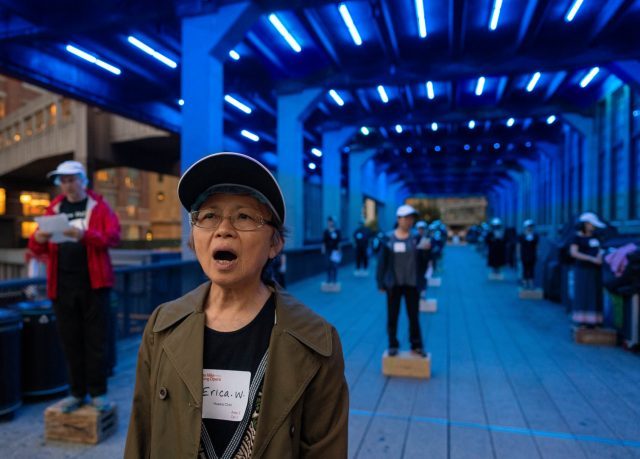
A reluctant prostitute named Maria is unhappy to have to deal with American gamblers in Mikhail Kalatozov’s I Am Cuba
NEW YORK FILM FESTIVAL: I AM CUBA (SOY CUBA) (Mikhail Kalatozov, 1964)
Film Society of Lincoln Center
West 65th St. between Eighth Ave. & Broadway
Sunday, October 7, Walter Reade Theater, 9:00
Festival runs through October 14
212-875-5610
www.filmlinc.org
 The Revivals section of the fifty-sixth New York Film Festival includes a rare screening of Mikhail Kalatozov’s 1964 political epic, I Am Cuba, in a 4K restoration from Milestone. In the early 1960s, the Soviet Union wanted to cement its hold on Cuba and celebrate its new Communist regime by making a propaganda film celebrating the Cuban Revolution and the end of Fulgencio Batista’s dictatorial reign. The Soviets actually disowned the result, considering it too arty and inaccessible for their needs. But it’s quite a film, a lavishly photographed black-and-white gem that was championed by Martin Scorsese and Francis Ford Coppola when it was resurrected at the Telluride Film Festival in 1992.
The Revivals section of the fifty-sixth New York Film Festival includes a rare screening of Mikhail Kalatozov’s 1964 political epic, I Am Cuba, in a 4K restoration from Milestone. In the early 1960s, the Soviet Union wanted to cement its hold on Cuba and celebrate its new Communist regime by making a propaganda film celebrating the Cuban Revolution and the end of Fulgencio Batista’s dictatorial reign. The Soviets actually disowned the result, considering it too arty and inaccessible for their needs. But it’s quite a film, a lavishly photographed black-and-white gem that was championed by Martin Scorsese and Francis Ford Coppola when it was resurrected at the Telluride Film Festival in 1992.
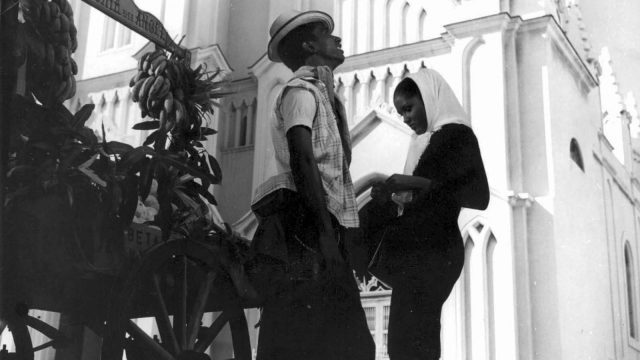
A 4K restoration of I Am Cuba is being shown in the Revivals section of the New York Film Festival
I Am Cuba is divided into four sections that tell the story of the nation from different points of view. The film opens in a casino where American men degrade Cuban prostitutes; one of the men demands to see the home of one of the women, Maria, so he trudges with her through a poverty-stricken region and meets an unexpected man. Next, Pedro, a tenant farmer, is told that the land he has been working for decades has been sold to the American company United Fruit, so he takes dire action while protecting his family. (“I used to think the most terrifying thing in life is death,” he says. “Now I know the most terrifying thing in life is life.”) In the third story, a university student named Enrique is overeager to get involved in a campus rebellion, especially after saving a young woman from drunk American soldiers and witnessing a cold-blooded shooting by the police. The final part deals with a pacifist villager named Mariano who is being goaded by a soldier to join the military fight for freedom.
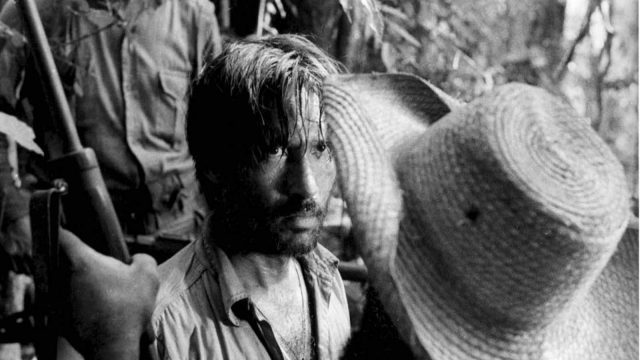
A pacifist would rather stay home than fight in I Am Cuba
I Am Cuba is one of the most visually stunning films ever made. Kalatozov and cinematographer Sergei Urusevsky, who had previously collaborated on the extraordinary Palme d’Or winner The Cranes Are Flying, create breathtaking tracking shots from virtually impossible angles, high in the air and underwater, assisted by camera operator Alexander Calzatti, who was practically a stuntman to achieve whatever was necessary. A joint production of the Soviet company Mosfilm and the new Cuban Institute of Cinematographic Art and Industry, the film was written by Soviet poet and novelist Yevgeny Yevtushenko and Cuban director and writer Enrique Pineda Barnet and features interstitial narration by Havana-born actress Raquel Revuelta as the voice of the nation. “Is this a happy picture?” she asks. “Don’t avert your eyes. Look! I am Cuba. For you, I am the casino, the bar, the hotels. But the hands of these children and old people are also me.” Later she encourages her citizenry to take up arms, softly stating, “I am Cuba. Your hands have gotten used to farming tools. But now a rifle is in your hands. You are not shooting to kill. You are firing at the past. You are firing to protect your future.” The film, of course, takes on added relevance today given the US government’s relationship with Cuba and the death of Fidel Castro in November 2016; there are also scenes that seem to prefigure the coming civil rights and peace movements in the US that occurred after the film was made. I Am Cuba is screening on October 7 at 9:00 at the Walter Reade Theater in the Revivals section of the New York Film Festival, which also includes Djibril Diop Mambéty’s Hyenas, Glenn Silber’s The War at Home, and Aleksei Guerman’s Khrustalyov, My Car!
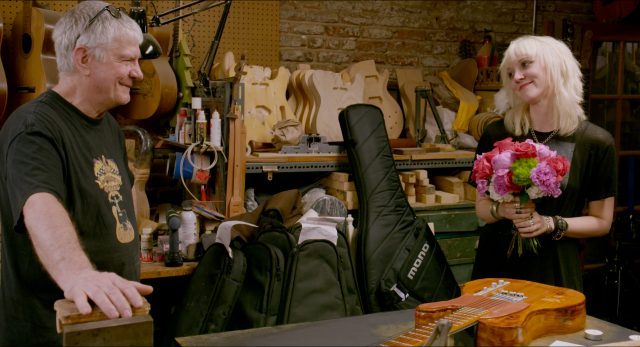
 In the second half of Ron Mann’s utterly delightful and unique documentary Carmine Street Guitars, a well-dressed, well-groomed young man enters the title store in Greenwich Village and identifies himself as Adam Shalom, a Realtor who is selling the building next door. Shalom tries to talk about square footage, but
In the second half of Ron Mann’s utterly delightful and unique documentary Carmine Street Guitars, a well-dressed, well-groomed young man enters the title store in Greenwich Village and identifies himself as Adam Shalom, a Realtor who is selling the building next door. Shalom tries to talk about square footage, but 
